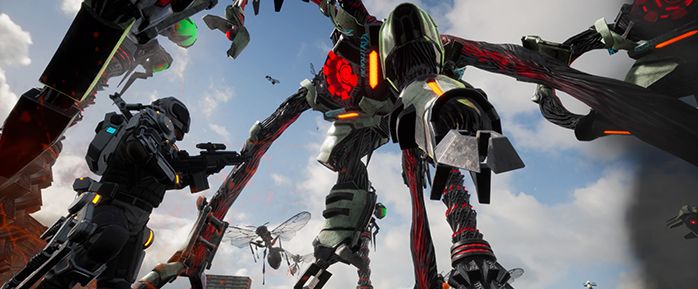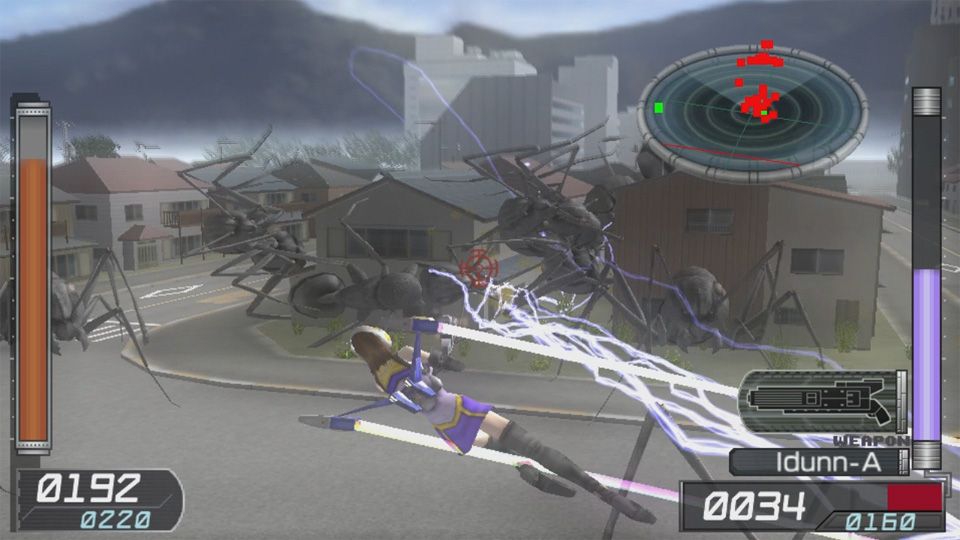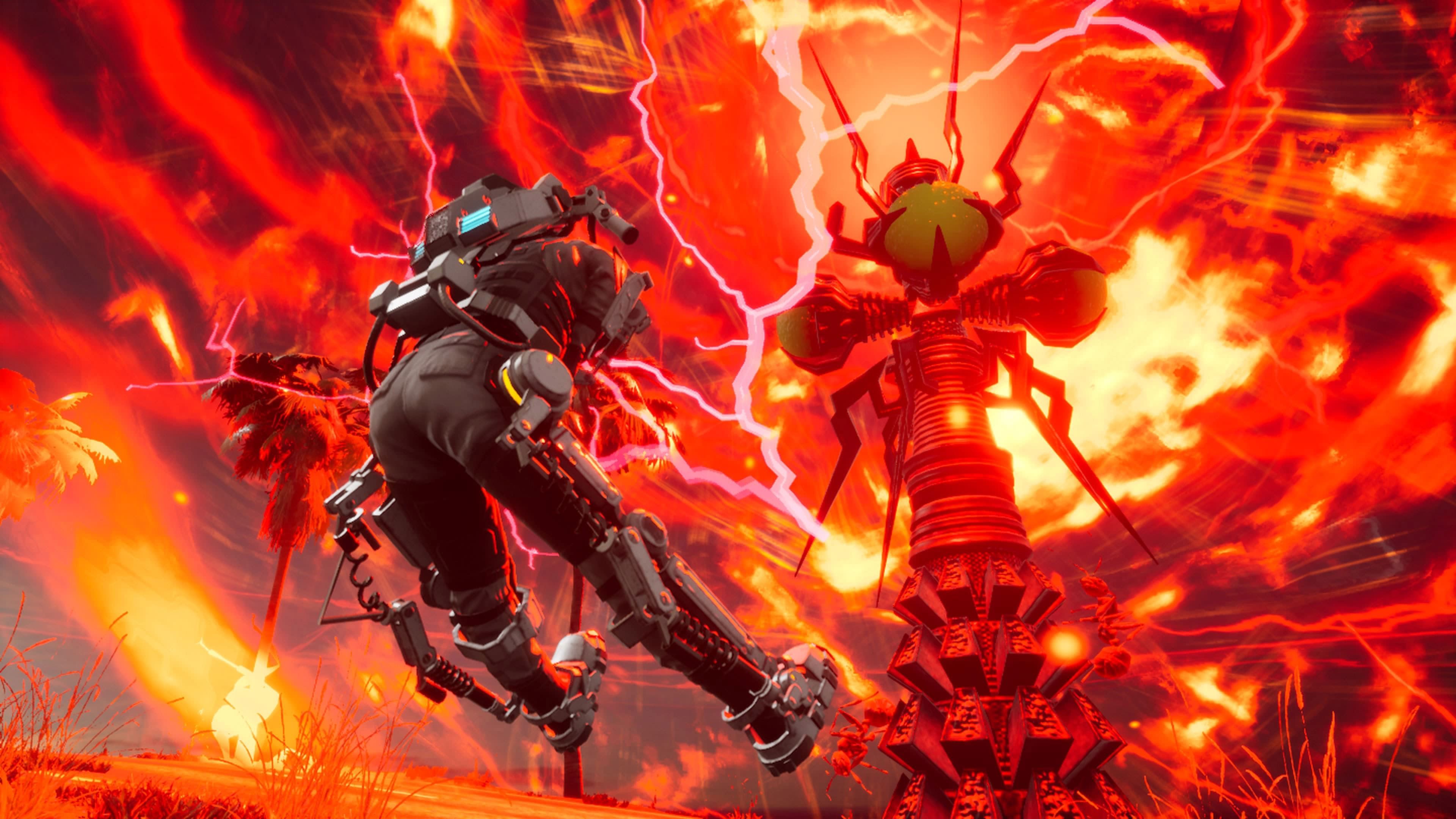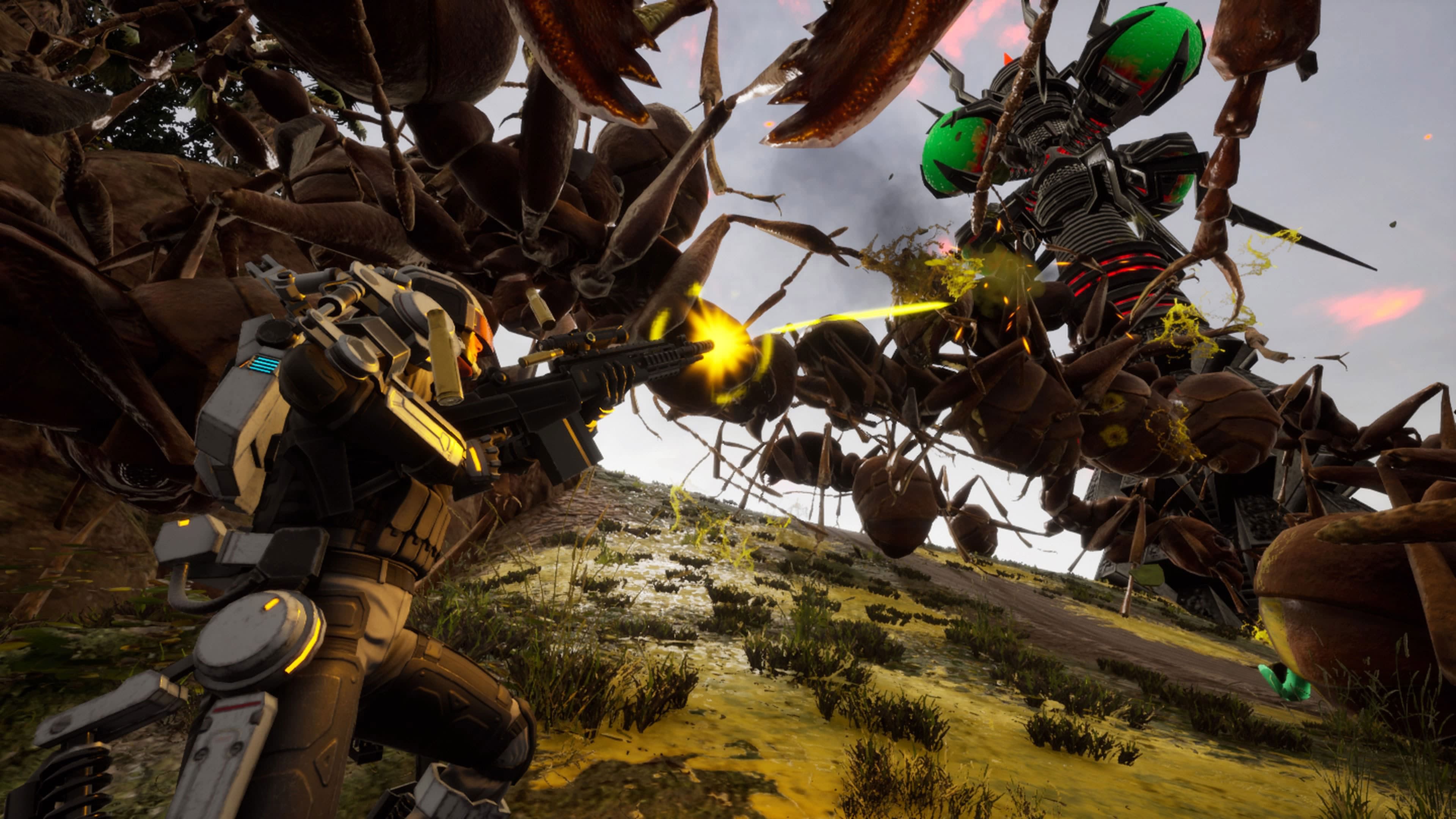While getting an advanced hands-on with Earth Defense Force: Iron Rain was a great way to spend a morning in San Francisco, meeting long-time series producer Nobuyuki Okajima was easily the highlight of D3 Publisher's event. What was supposed to be a 15-minute chat ran a bit long, but it was a fun enough conversation that it wasn't until later that I realized we'd talked twice as long as the allotted time. We started with the history of EDF, went over its early struggle with consoles that were constantly fighting to keep the framerate at a playable speed, compared the new Iron Rain to the mainline series, and brainstormed good uses for weird weapons. There's a lot to go over, so let's get to it:
[Hardcore Gamer] Ok, so Earth Defense Force has had a really interesting arc of development from its initial Simple 2000 PS2 origins to getting multiple titles today. How has that come about?
[Okajima] This journey of EDF I cannot tell in fifteen minutes so I'm going to say something very general and very short. You may know that EDF started as one of the Simple 2000 series, this is like a $20 game. EDF became very popular, basically because people to people, word of mouth. We didn't spend that much money for the advertisement. We actually didn't think much when we first made it because the Simple Series has more than one hundred titles, and EDF was just one of them. For Sandlot, on the development side, they think it's... we don't want to say they make it just... the concept is just to make a reasonable game to just make it as they like. Somehow it came out good, because of Simple Series and being for the casual gamers, somehow it found a future for the game. It had a chemical reaction with the user and became a very popular game, and because it became popular we made a number two game in the series.
Now I never got to play the first one but I played the second, and when I played the second one I was impressed that, for what I would have expected from a Simple 2000 Series, it felt bigger, richer, more fully fleshed out than what I'd expect from the series. Was this done with the expectation that the series would be able to grow from there?
A very good question, actually many users started from number two. We debated a lot if we should sell number two at 2,000 yen, because it's worth more than that, twice to three times easily. At that time D3 Publisher, our strategy was selling cheap but a lot, but we want people to know that the Simple Series has some very good rich content and you get more than you pay. We expect that synergy effect, that's why we decided to sell at 2,000 yen. EDF2, we felt many core gamers liked it, not just the casual users. And then what happens is the user expects more for the next game. If you're thinking about the investment and return, you cannot make more or better game than number two with the 2000 yen limit. As a producer I also believed that EDF should step up to the full price, which is why number three is full price rather than 2,000 yen.
After Earth Defense Force 2 it came out on the Xbox 360, and while the US missed EDF2 (it came out in Europe) we did actually get for the very first US release EDF 2017. How well did that do in alerting the US the series was here?
It did pretty good actually.
The series has always been known for pushing its hardware. On the Xbox 360 I could remember moments you could practically measure seconds per frame when things really got insane. Did you find yourself constantly struggling against the limitations of the hardware at the time?
What did you mean, the limitations of the hardware?
Well basically, nowadays while it's not like 60 frames per second all the time it's generally pretty smooth, a nice consistent framerate, but back then it felt like everything the series was trying to do was more than the hardware could handle.
It's true that EDF has a lot of giant enemies, so there are limitations on the PS2, but we believe the 360 cleared most of the problem. Don't you think so?
On Inferno (editor's note: highest difficulty level) there was one level called The Pit and one of my favorite strategies, because I was never strong enough on Inferno to actually kill anything, was to go to the edge of the pit, drop the strongest bomb I had down there, a couple of them, then walking away. When you let that thing off (editor's note again: it was a triggered explosive) the game would basically stop for three to four seconds. Moments like that. Or when you were in the heat of battle and the middle of everything it would like -gestures with hand moving a little once per second, one two three- with the framerate taking a dive. I mean it was absolutely playable but it still felt like my poor system was going to catch on fire any second now.
You should not see the explosion. (laughter) Now that the PS4, and maybe you played EDF5...
Beat it, loved it.
Thank you very much.
It's definitely a relic of the past, but it's always interesting to see how much was trying to fit in to those older consoles so they were pushing right up against the edge of what it could do.
That's the mission with Sandlot, actually, the developers. They go to the edge. I think they like it.
Ok, now moving along to current day with Iron Rain. Iron Rain is a change of tone but from what I've played so far it's very EDF. I understand that this one is being developed with western audiences in mind. How did that influence its development?
Since you played EDF5, it's very easy to explain. The numbered series, for example, the battlefield is like Tokyo. A user like you might like it playing in Tokyo. So first we changed the location because many users prefer to play in like the United States, San Francisco and Los Angeles, somewhere they're familiar with. And the game you're also making another You, you become somebody else playing somewhere else, but maybe many American or European prefer to be perhaps becoming an American soldier playing in Los Angeles or San Francisco rather than maybe becoming Japanese and playing in Tokyo. They may feel much closer fighting in the United States. Also you know the numbering system very well and you get used to it, but we also wanted to open up the door to the first EDF users. It is a very simple game fighting with enormous enemies, and so we kind of wanted to start from the beginning. EDF for the first users world-wide.
I'm also noticing that this one is more feature-rich in terms of what a modern user... One of the fun things about Earth Defense Force, the core series, is that it very much feels like a throwback to the PlayStation 2 era. Even as big and bombastic and over-the-top as it gets, it feels like "here's your guy, here's your weapons, here's your enemy, go kill!" It's a very videogamey type of videogame whereas this one is... we've got the multiplayer options and it seems like there's multiple multiplayer modes in there, we've got the customization options, and a lot of the things you might expect from 2019 game development. It's also of course from a different developer. I suppose the question is how the features ended up in this one whereas EDF5 is more classic-style... It's like a conscious division between the series?
That's what we wanted to bring in so I'm very glad you noticed this point. If we have more users like you we can continue the Iron Rain series, not only this one, but number two and three.
So I have a question to you. We made a new series because we wanted to keep the numbered series like it is as a classic type of game, because we definitely have people who like it. We now have another version, Iron Rain and the core series. How do you like our approach. Do you think it's good?
It's an interesting approach. It's basically two series running parallel, one for the classic gamer and one trying to gain a foothold in the modern gamer using... I hate to go marketing-talk but using an IP that's become known through it's fan-base. It will be interesting to see if the knowledge of the classic fan-base can help it go to a wider audience appeal. Obviously I'm hoping it does because I love this kind of game.
One of our missions is to secure how classic the numbered series. We didn't want to change it. Our goal is going that same direction in the numbered series, number six and number seven, the classic game style.
One of the things EDF is known for is its crazy over-the-top weapons. You've got a weapon for every situation and a few for situations you can't even imagine. Where do these all come from, because the sheer volume of weapons, the type of weapons and the effects, and all the stats that go into them. Is there someone on the team who just loves making crazy weapons or something?
EDF is known for the crazy weapons and it's from the creators at Sandlot, they have a very... the people like jokes, and they didn't want to put only the very normal weapons, but also the very crazy weapons, the weird weapons. But some users actually find very good use for the crazy weapons. That's communication between creator and users.
So no matter how weird the weapon may be there you'll find a user who can figure out how to make it work for them?
There's one pineapple (grenade) that you can throw only like five meters but when it explodes it makes a twenty meter explosion. In EDF 2017 while developing the internal people called me asking me if they'd made a mistake, if it's just a bug that you can only toss it five meters. So I explained that we made it in that way on purpose, that there's some use, but he insisted on Why?, because you know that you die when you use it.
No no, when you're in a cave you just throw it over the ledge.
Some people don't understand. (laughter) They think it's a bug and we should fix it before release. I hope everybody understands like you.
And at that point time came to an end, so after a little bit more chatting and thanking Okajima for the extra-long interview I went back to play a little more Iron Rain before wandering off into a lovely San Francisco afternoon.




